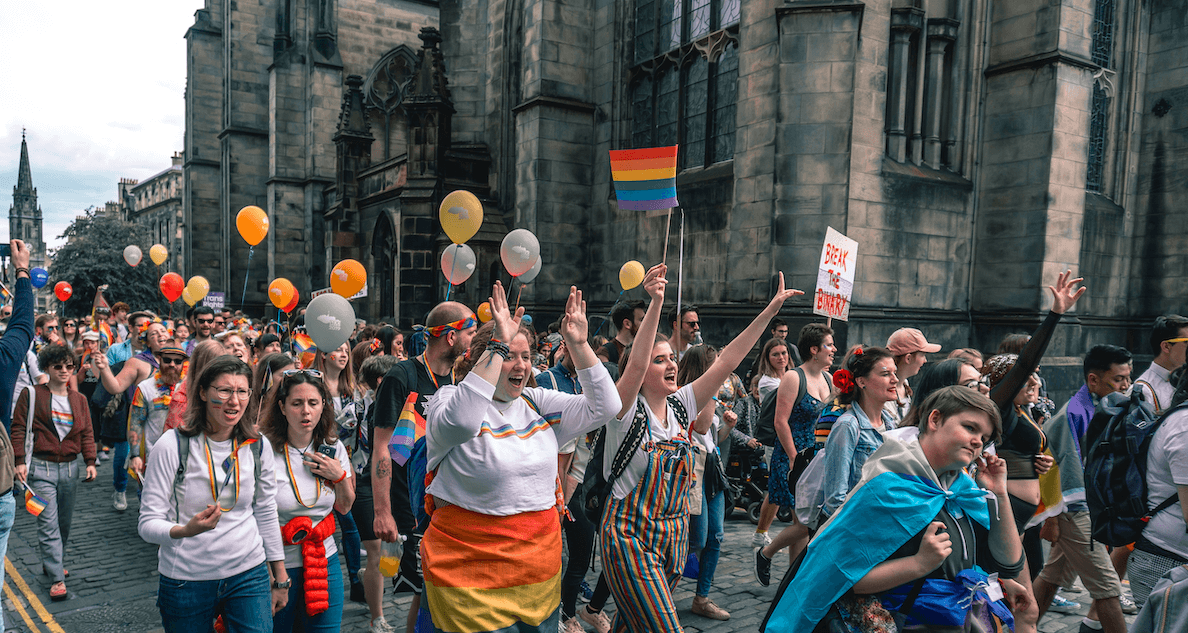Scotland’s LGBT+ inclusive curriculum is a change for the better
In a step forward towards greater inclusivity, Scotland will become the first country to integrate LGBT+ education into the national school curriculum.
Replacing the previous guidelines for relationship and sex education which were issued 20 years ago, the new curriculum is set to be implemented in 2021 and will cover a wide range of topics in order to increase awareness of LGBT+ experiences and history. As Sam Damshenas from ‘Gay Times’ explains: “all public schools will receive lessons in issues faced by the LGBTQ+ community such as same-sex marriage, same-sex parenting, homophobia, biphobia, transphobia and the HIV and AIDS epidemic.”
The decision to include LGBT+ inclusive education was accepted by Scottish Ministers in November 2018 following recommendations from the Time for Inclusive Education (TIE) campaign to improve the learning environments of children and young people. Founded in 2015, TIE is a Scottish charity which aims “to combat homophobic, biphobic and transphobic bullying in schools with LGBT-inclusive education.”
TIE’s campaign for change hasn’t always been successful
After several years of lobbying the government, the acceptance of their recommendations was outlined in an ‘LGBTI Inclusive Education’ report which marks the beginning of change for the better. The report not only outlines general recommendations for the implementation of LGBT+ subject matter but also presents suggestions on teaching, monitoring and the recording of bullying incidents. It is through this holistic approach that TIE work towards their goals of not only raising awareness and increasing knowledge but also tackling issues of bullying and prejudice.
Despite their outreach to the government proving effective, TIE’s campaign for change hasn’t always been successful. The charity has experienced both highs and lows, facing challenges to their goals and difficulties along the way. Most notably, TIE’s initial campaign, a public petition encouraging statutory teaching of LGBT+ issues, was rejected by the Scottish Parliament in 2016 on the basis that implementing LGBT+ education would not be supported by local authorities.
The teaching of LGBT+ issues has consistently proved a point of contention
While this setback was ultimately overcome, the initial unwillingness of authorities to alter the curriculum reflects the controversial nature of the topic – with ideas for change often met with backlash. Outside Scotland, in 2019, a primary school in Birmingham faced protests after including LGBT+ equality lessons. The school was “the focus of a long campaign to halt LGBT equality messages being taught in the classroom.” The protesters, who argued that the children were being exposed to inappropriate teaching, were eventually banned from demonstrating outside the school.
The teaching of LGBT+ issues has consistently proved a point of contention – not only in the UK but worldwide. In America, there is no national standard for LGBT+ education, with states often acting alone in their decision to implement inclusive topics. California became the first state to require LGBT+ history to be included in the school curriculum in 2011, though teacher training, funding and monitoring proved unclear. On the other side of the globe, in Australia, a ‘Safe School’ program aimed to combat anti-LGBT+ abuse in schools launched nationwide in 2014 but received criticism and alterations over time.
The implementation of LGBT+ issues and history on the curriculum is a change to be proud of
After a constant barrage of setbacks, the road towards LGBT+ inclusive education admittedly appears long and rocky, with even positive changes such as Scotland’s decision seen as forcefully pushing LGBT themes onto children. Regardless of opposing opinions, Scotland’s movement forward is to be celebrated.
John Swinney, Deputy First Minister and Education Secretary praised the changes, noting that “Scotland is already considered one of the most progressive countries in Europe for LGBTI equality.”
Ultimately, the implementation of LGBT+ issues and history on the curriculum is a change to be proud of, not only due to the hope of a better future which it brings, but the past struggles and trials of campaigning it has come to represent.

Comments